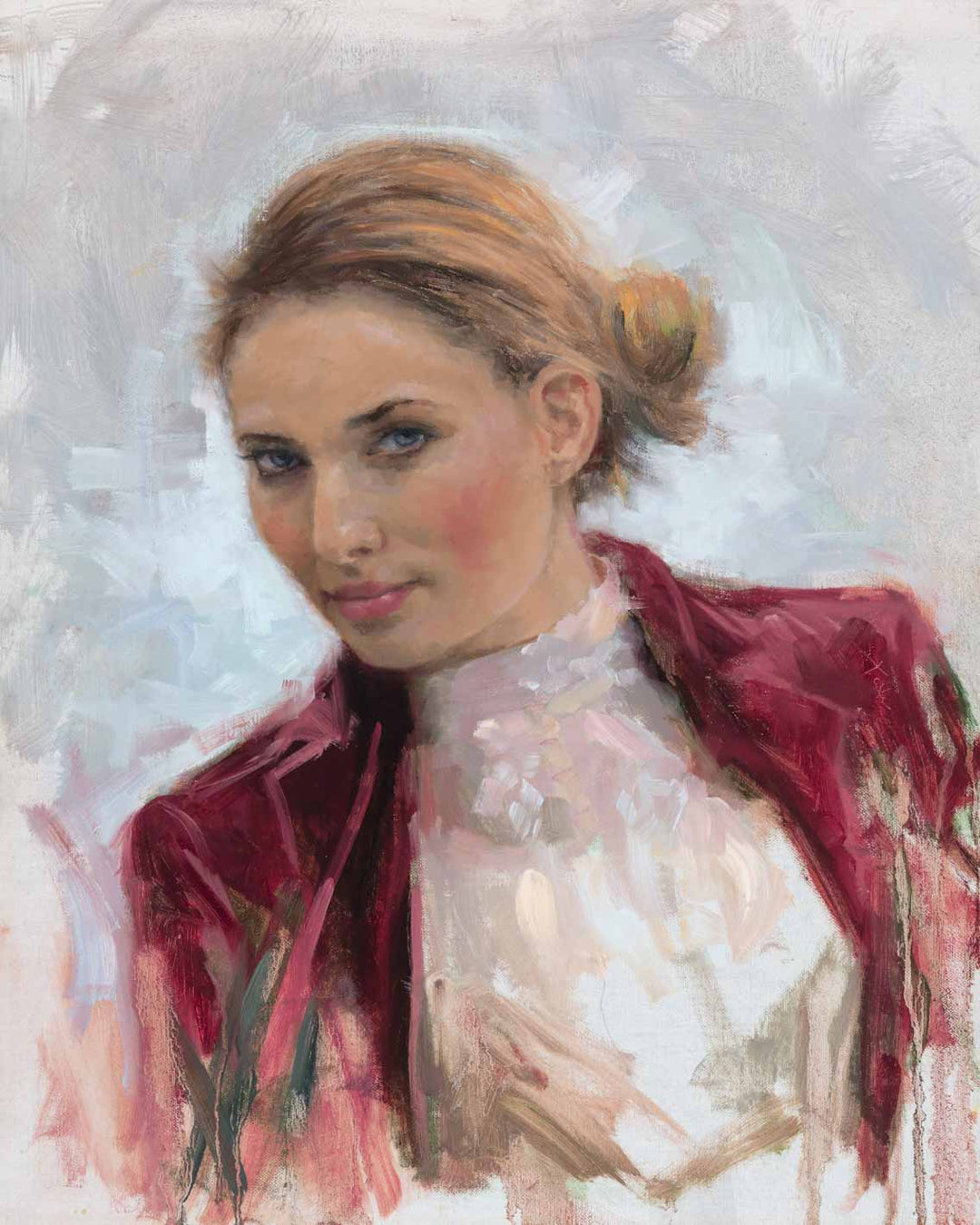Unique Decor Ideas: Oil Paintings for Sale
Unique Decor Ideas: Oil Paintings for Sale
Blog Article
Checking out Everything About Oil Paints: A Guide to Recognizing Their Beauty and Worth
Oil paints have actually mesmerized target markets for centuries, offering a peek into the artistic mastery of numerous periods. Their abundant background is linked with innovative strategies and profound psychological expression. Understanding the materials and approaches behind these artworks can boost gratitude. Additionally, the marketplace for oil paints offers possibilities for enthusiasts and financiers alike. As one explores this remarkable globe, the question occurs: what makes an oil paint really useful?
The Background of Oil Paint: A Trip Via Time
Oil paint has origins that date back to old times, it absolutely prospered throughout the Renaissance, when artists uncovered its convenience and abundant shade possibility. Early instances can be traced to the 7th century, with methods progressing significantly throughout cultures. The medium became noticeable in Northern Europe in the 15th century, specifically with the works of musicians like Jan van Eyck, that spearheaded its use for in-depth realism and dynamic hues. This duration noted a separation from tempera paints, permitting higher deepness and structure. As oil painting spread, it affected countless artists, leading to masterpieces by renowned numbers such as Leonardo da Vinci and Rembrandt. The medium's legacy proceeds, shaping the art globe well right into modern times.
Comprehending Oil Paints: Materials and Techniques
As artists check out the world of oil paints, they come across a diverse array of materials and strategies that specify this tool. The key parts of oil paint include pigments, which provide shade, and drying oils, such as linseed, that bind the pigments and help with application. Various additives can modify the paint's appearance and drying out time, improving flexibility. Techniques like glazing, where clear layers are constructed up, and impasto, which entails applying thick paint, enable for different aesthetic results. Furthermore, using brushes, scheme knives, and even fingers can produce one-of-a-kind appearances and surfaces. Comprehending these techniques and materials allows artists to totally share their imagination and achieve the wanted effect in their art work.
The Function of Color in Oil Paintings
Shade plays a pivotal role in oil paints, influencing both visual allure and emotional resonance. Recognizing color concept basics, including the relationships between hues, can improve a musician's ability to share mood and atmosphere. In addition, grasping color blending methods enables higher depth and richness in a paint's scheme.

Color Theory Basics
Understanding color concept is vital for artists collaborating with oil paints, as it forms the structure for developing unified and visually engaging structures. Shade theory encompasses the research study of how shades connect, the color wheel, and the connections in between key, additional, and tertiary shades. Musicians make use of complementary shades to improve contrasts and create centerpieces, while similar shades promote unity and cohesiveness within a piece. Additionally, the ideas of warm and great colors influence the understanding of depth and space in a paint. Understanding these principles permits musicians to manipulate color efficiently, directing the audience's eye and interacting their designated message. Proficiency of color concept inevitably enriches a musician's ability to share emotions and concepts through their work.
Psychological Influence of Shade
The emotional effect of shade in oil paintings plays a crucial role in just how visitors link and view with art work. Shades evoke details feelings and moods, influencing the viewer's mood. Warm hues like oranges and reds can produce a sense of heat and power, while great tones such as blues and eco-friendlies often evoke peace or self-questioning. Artists purposefully choose color palettes to enhance narrative elements, directing the audience's emotional trip. The saturation and contrast of shades even more intensify these results, attracting interest and producing focus. Eventually, the interplay of colors in oil paintings not only improves their visual appeal yet likewise acts as an effective medium for emotional expression, enhancing the audience's experience and analysis.
Shade Combining Techniques
While many elements of oil painting add to the general structure, grasping color blending strategies is necessary for attaining wanted results and deepness. Color blending can be approached via numerous methods, consisting of the subtractive and additive procedures. Additive mixing entails integrating colors of light, while subtractive blending counts on pigments, where shades mix to develop new tones. Musicians typically use a minimal scheme to create unified jobs, understanding the partnerships between primary, second, and tertiary colors. Techniques such as glazing and scumbling even more boost depth and luminosity. By masterfully blending colors, an artist can evoke emotions, produce prime focus, and accomplish a sense of realistic look, inevitably elevating the painting's psychological and visual effect.
Famous Oil Painters and Their Iconic Works

Renowned for their mastery of shade and strategy, oil painters have actually created several of one of the most well known art work in history. Renowned musicians like Vincent van Gogh mesmerized audiences with his emotive brushwork in "Starry Night," while Claude Monet's "Perception, Dawn" laid the foundation for Impressionism. Leonardo da Vinci's "Mona Lisa" continues to be an enduring sign of creative brilliant, showcasing his skill in recording human expression. On the other hand, Rembrandt's "The Night Watch" highlights his cutting-edge use light and shadow. Other noteworthy numbers include Pablo Picasso, who changed contemporary art with his strong testing in jobs like "Les Demoiselles d'Avignon," and Georgia O'Keeffe, whose lively representations of landscapes and flowers helped specify American innovation. Each musician's one-of-a-kind style added considerably to the oil paint landscape.
Just how to Examine the Top Quality of an Oil Painting
Assessing the top quality of an oil painting entails a careful evaluation of craftsmanship techniques, in addition to an analysis of shade and composition. Observing brushwork, layering, and the application of paint can expose the artist's skill level. In addition, the interaction of shades and the general setup of aspects add substantially to the paint's aesthetic oil paintings for sale worth.
Evaluating Craftsmanship Strategies
A thorough assessment of workmanship strategies is essential for figuring out the top quality of an oil paint. Evaluators need to initially analyze the application of paint; thick, distinctive brushstrokes might recommend a skilled hand, while excessively uniform applications could suggest an absence of depth. oil paintings for sale. The layering technique is also vital; the visibility of glazes and differed thickness can improve luminance and complexity. Furthermore, the quality of the materials used, such as the canvas and pigments, plays a significant duty in resilience and overall visual. Attention to information in elements like edges and changes in between colors mirrors the artist's commitment to their craft. Ultimately, these strategies add to the painting's psychological effect and market worth, offering as indications of the artist's ability and intent
Assessing Shade and Make-up
While reviewing the high quality of an oil painting, one should concentrate on the interaction of shade and composition, as these elements are essential to the artwork's overall effect. Color choices can stimulate emotions and develop mood; therefore, the musician's combination need to be analyzed for consistency and comparison. A well-balanced composition guides the audience's eye and creates a sense of unity. Musicians frequently employ techniques like the rule of thirds or leading lines to enhance visual interest. Furthermore, the usage of light and shadow can include depth, enhancing the three-dimensionality of the paint. Inevitably, an effective oil painting marries color and structure, engaging the viewer and welcoming a deeper admiration of the musician's vision and strategy.
Caring for and Preserving Oil Paintings
Appropriate treatment and conservation of oil paints is vital for maintaining their integrity and durability. To shield these art work, it is important to present them far from direct sunlight, which can create fading and discoloration. Preserving a stable setting with controlled temperature and moisture more aids in stopping damage. Cleaning up should be done carefully utilizing a soft, completely dry cloth, preventing any kind of rough chemicals that can damage the paint or varnish. Normal inspections for indicators of damage, such as splitting or flaking, are suggested. When saving or transferring oil paints, correct extra padding and framework are required to stay clear of physical damage. Eventually, persistent care adds to the visual charm and value of oil paintings with time.
The Market for Oil Paints: Gathering and Spending
Comprehending the market characteristics for oil paints is vital for enthusiasts and financiers alike. The value of these art work is influenced by various elements, consisting of the musician's reputation, historical value, and present fads. Collectors usually seek pieces that resonate directly while considering prospective recognition in value. Galleries and public auctions work as key locations for trading, with prices rising and fall based on need and rarity. Buying oil paintings requires study into the marketplace, along with an understanding of authenticity and provenance. In addition, emerging artists may offer chances for considerable returns, while established names can command high prices. In general, a calculated technique to accumulating can produce both aesthetic enjoyment and monetary benefits.

Frequently Asked Inquiries
What Are the Ecological Impacts of Oil Painting Materials?
The environmental impacts of oil painting materials include the release of volatile natural compounds (VOCs), dangerous waste generation, and resource removal for pigments. These factors add to contamination and ecological deterioration, elevating problems among eco aware musicians and customers.
Exactly How Do Various Canvases Affect Oil Painting Outcomes?
Different canvases influence oil painting results significantly. Structure, absorbency, and surface area high quality can change paint application, drying times, and shade vibrancy. Artists often choose certain canvases to attain preferred effects and enhance their creative expression.
Can Oil Paintings Be Restored if Harmed?
If damaged, Oil paintings can undoubtedly be brought back. Specialist conservators make use of numerous strategies to fix tears, clean surfaces, and address staining, guaranteeing that the artwork preserves its original appeal and value for future generations.
What Are the Indicators of an Original Oil Painting?
The indicators of an original oil paint consist of visible brush strokes, texture variants, and an unequal canvas weave (oil paintings for sale). Furthermore, authenticity may be confirmed via provenance, trademarks, and the existence of a varnish layer unique to oil tools
Just How Has Modern Technology Influenced Modern Oil Paint Techniques?
Innovation has substantially affected contemporary oil paint strategies by introducing electronic tools for planning, improved products for texture and longevity, and online platforms for sharing and selling art, thus expanding musicians' innovative possibilities and target market get to. Oil painting has origins that date back to ancient times, it genuinely thrived during the Renaissance, when artists found its convenience and abundant shade capacity. The emotional effect of shade in oil paints plays an important duty in just how visitors regard and connect with artwork. While several aspects of oil painting contribute to the overall composition, understanding shade mixing strategies is essential for achieving desired effects and depth. Reviewing the high quality of an oil painting includes a careful analysis of workmanship strategies, as well as an evaluation of color and structure. While evaluating the top quality of an oil painting, one have to concentrate on the interplay of color and composition, as these elements are essential to the art work's general effect.
Report this page